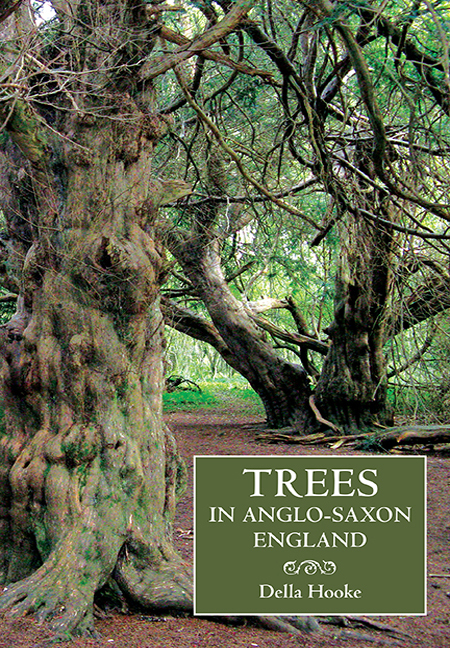Book contents
- Frontmatter
- Contents
- List of Illustrations and Tables
- Preface and Acknowledgements
- List of Abbreviations
- PART I Tree Symbolism
- Chapter 1 Trees and Groves in Pre-Christian Belief
- Chapter 2 Christianity and the Sacred Tree
- Chapter 3 Trees in Literature
- Chapter 4 Trees, Mythology and National Consciousness: into the Future
- PART II Trees and Woodland in the Anglo-Saxon Landscape
- PART III Individual Tree Species in Anglo-Saxon England
- Epilogue
- Bibliography
- Index
- Anglo-Saxon Studies
Chapter 2 - Christianity and the Sacred Tree
from PART I - Tree Symbolism
Published online by Cambridge University Press: 09 May 2017
- Frontmatter
- Contents
- List of Illustrations and Tables
- Preface and Acknowledgements
- List of Abbreviations
- PART I Tree Symbolism
- Chapter 1 Trees and Groves in Pre-Christian Belief
- Chapter 2 Christianity and the Sacred Tree
- Chapter 3 Trees in Literature
- Chapter 4 Trees, Mythology and National Consciousness: into the Future
- PART II Trees and Woodland in the Anglo-Saxon Landscape
- PART III Individual Tree Species in Anglo-Saxon England
- Epilogue
- Bibliography
- Index
- Anglo-Saxon Studies
Summary
It has been shown how Roman historians confirm that tree worship was a potent force in Europe at the beginning of the first millennium AD and that, in common with other world-wide beliefs, it was often thought that trees themselves had souls or, at the very least, were inhabited by spirits. Christianity abhorred such beliefs. While the Church was probably genuinely disgusted by some of the pagan practices associated with trees and sacred groves, it is likely to be the fear of a powerful competitive belief which led to such forcible attempts to expunge tree worship. The conflict was an ancient one: in the Old Testament, the Bible recounts how the Israelites, when they were promised, through Moses, the land of Canaan, were instructed to cut down and burn the ‘groves’, perhaps referring to a large sacred pole of wood which was an emblem of old tree-worship and the instruction is in Deuteronomy 12.2: ‘Ye shall utterly destroy all the places wherein the nations which ye shall possess served their gods, upon the high mountains, and upon the hills, and under every green tree.’ The association of trees with prophecy, or even with healing power, had to be reinterpreted as evil. The story of John Cassian, composed in the late fourth century, tells how the virtuous children of Seth (the third son of Adam and Eve) allied themselves with the daughters of Cain and turned their learning to profane uses, thus showing such magic to be a malefic art assisted by demons.
I exhort you, and before God and His angels I proclaim, that you should not come to those devilish banquets which are held at a shrine, or fountains or trees.
Beliefs in sacred trees had to be extinguished, and trees figure in the Lives of many Christian saints. In the late fourth century, according to a later Life, Martin, bishop of Tours, destroyed a heathen temple in the region that was associated with a sacred tree: ‘destruction of the first caused little protest, attack on the tree an uproar’. Ælfric's Lives of the Saints notes:
Se halga martinus to-wearp sum hæðen-gild.
on sumere tide. on sumere stowe.
þa wæs an pin-treow wið þæt templ ge-friðed
swiðe halig ge-teald on þa hæþenan wisan.
þa wolde he for-ceorfan eac swilce þæt treow.
ac ða hæðen-gildan þam halgan wið-cwædon.
sædon þæt hi ne mihton on heora mode findan.
- Type
- Chapter
- Information
- Trees in Anglo-Saxon EnglandLiterature, Lore and Landscape, pp. 21 - 57Publisher: Boydell & BrewerPrint publication year: 2011

